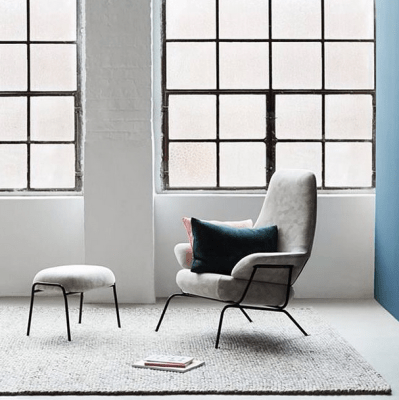Three months after Fab.com, the New York-based design/fashion marketplace, acquired Helsinki’s One Nordic and announced its intention to pivot its European business to focus solely on original home furnishings, the company is putting its eggs into a new basket — or basket chair, as the case may be.
Today it is launching Hem, selling Scandinavian-style tables, shelves and other furniture that have been designed, built and shipped in-house. “A European design company that is distributing all over the world,” in the words of CEO and co-founder Jason Goldberg.
To kick things off, Goldberg — who has relocated to build and run the operation in Berlin — says the new brand is going live in 40 markets. The online portal will ship to 30 countries, including the U.S., and a further 10 countries will have Hem furniture by way of resale partnerships with physical stores.
The brand Hem (Swedish for “Home”) was first made public earlier this year, and while Fab.com has been raising awareness through roadshows and Instagram previews, today is the first day that Hem is open for business.
Goldberg describes Hem — which follows in the tradition of other vertically-integrated e-commerce sites like Warby Parker and Bonobos — not as a pivot away from something that wasn’t working, but the realisation of his original ambition.
“Hem is the brand and company I have been dying to launch for a couple of years now,” he says. “I became fascinated with the opportunities and potential in online furniture from the beginning of Fab.”
That was why, Goldberg explains, the company acquired furniture sellers MassivKonzept in Berlin in 2013, invested in building out a private label furniture business, and eventually bought One Nordic to fill out in-house design and market development.
“One of my biggest regrets with Fab was that because we were curating everyone else’s products it was so challenging to develop our own tight taste and style,” he says. “We have that now with Hem.”
And yet, Hem’s rise comes amid some significant stumbles for Fab.com.
It has seen a sweep of layoffs (at its peak, Fab.com employed around 700 people; now the remaining Fab.com business in the U.S. has 25; there is also a 100-person tech team in India, and a manufacturing team in Poland); a retrenching of operations in Europe; and rumors of a shut down in the U.S. (not true, says the company).
We have also heard that some parties have been approaching Fab.com for a possible sale. Goldberg would not comment on this but said that Fab.com “is a steady business, employing 25 people and operating very consistently and very close to break-even.”
It’s not clear what kind of audience Fab.com has at the moment, but Goldberg says that all told Hem will be directly promoted to 8 million people today.
Goldberg is a founder who does not shy away from a pivot when things are not working out, but he also takes lessons from the previous efforts.
With Fab.com, Goldberg realised that the growth needed to succeed as a thin-margin e-commerce marketplace was just not going to happen.
“E-commerce is very much a scale business, where the winner takes all,” Goldberg says. As companies like Amazon and Alibaba have proven, the secret lies in infrastructure.
“It’s not that hard to build a $100 million revenue e-commerce business, but how do you scale after initial customer enthusiasm to consistently shipping fast, holding inventory, and so on. When you have scale it is much easier,” he says.
“When you are selling third-party products and the margins are very low and customer expectations are very high, it was not a model you could execute successfully, not a model where we liked to operate. We’ve seen a lot of others that stalled as well. There are very few really successful very large commerce players who are selling other people’s products at this point. So we decided we wanted to invest in making our own products and being full stack.”
Goldberg says that Hem will be leaning on the logistics and distribution networks that were built for Fab.
The decision to launch a whole new brand was because Fab had developed a reputation as a “value play,” with “quirky third party sellers,” in Goldberg’s words. “We wanted the new brand to be clean. At launch, we have only 150 products. Fab.com has 20,000 products. If we put the furniture there it would get lost.”
For aesthetic comparison, think “luxury Ikea.”
Fab to date has raised $336.3 million with backers including Andreessen Horowitz, Tencent, Atomico, Menlo Ventures, and many more.
At its last raise — a Series D that eventually totalled $165 million — Fab was valued at $1 billion. That valuation is holding firm for now, he says, and the company is not looking for more funding.
Goldberg says that Fab’s shareholders and board support the company’s pivot to vertically integrated furniture maker and its wider shift to a European center of gravity.
“When I went to the board and recommended this direction, I did so with a large war chest,” he says. “We are building a high margin business. I’m committed to building a profitable business on the money we’ve raised up to now. We have no plans to raise additional funds.”
The company’s cash will also help it stave off competition from other would-be vertically integrated furniture startups, he says. “If someone went to the Valley with a pitch to start an online furniture company, we’ve got a big advantage,” he says, “and the sweet spot for designing furniture online as well.”
